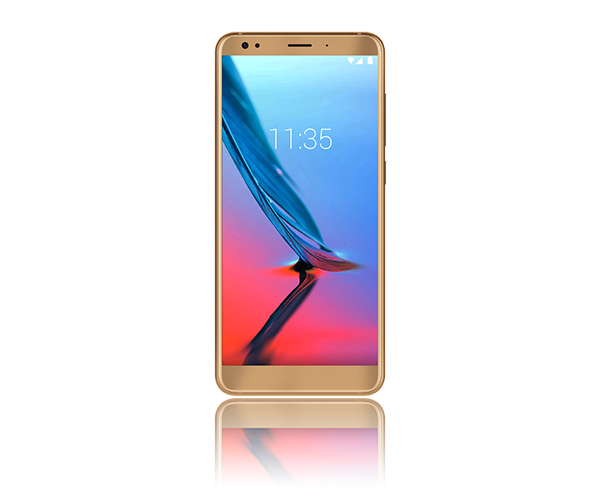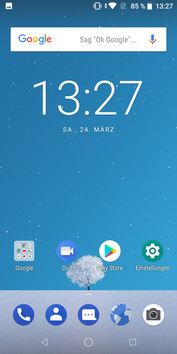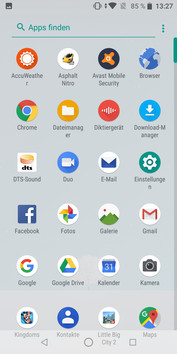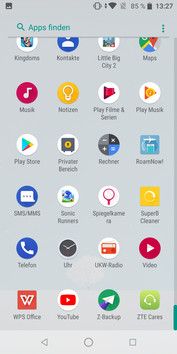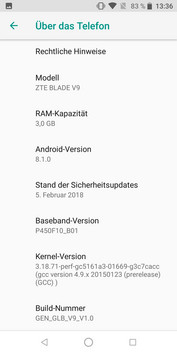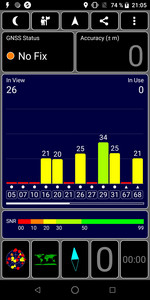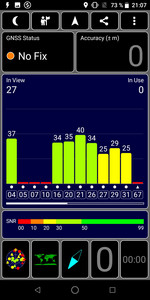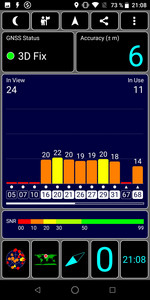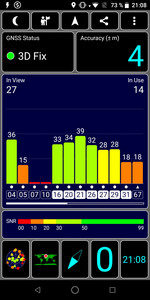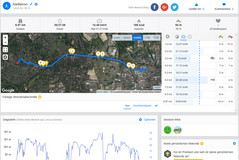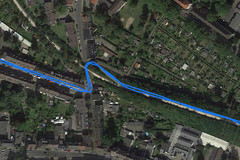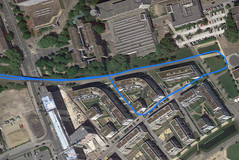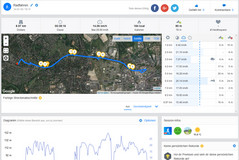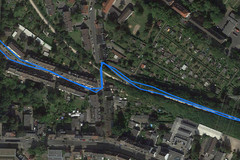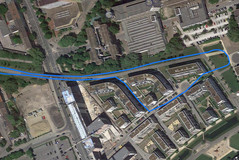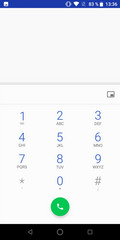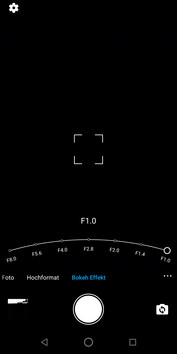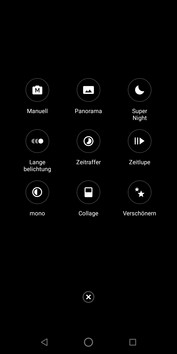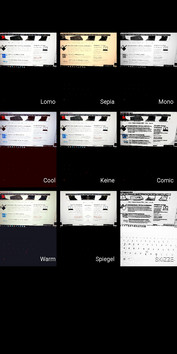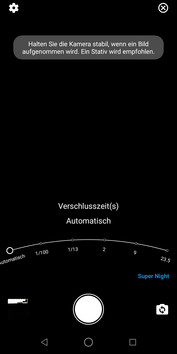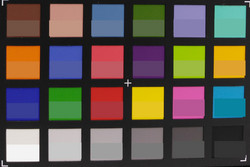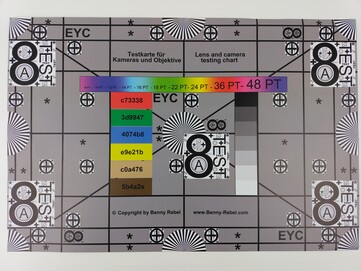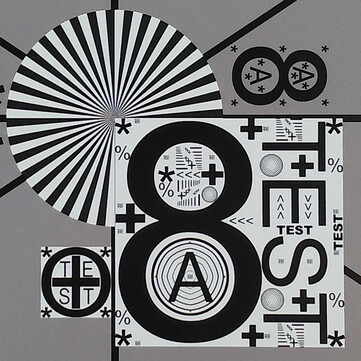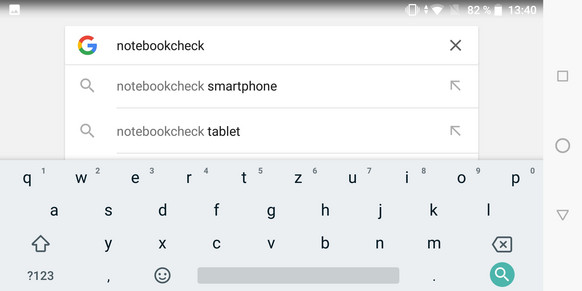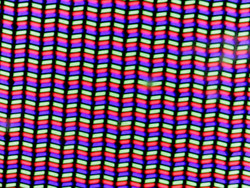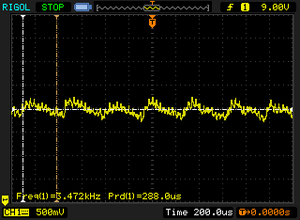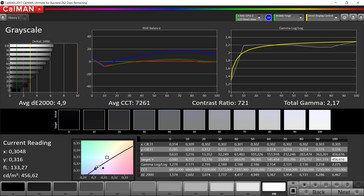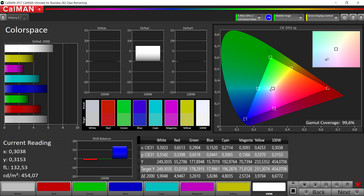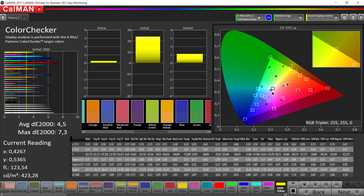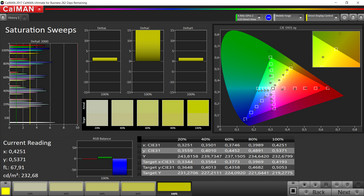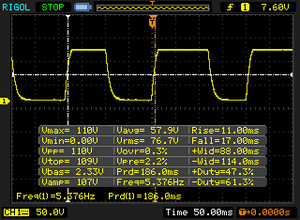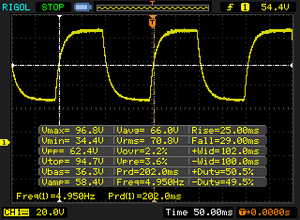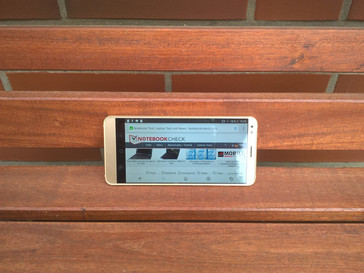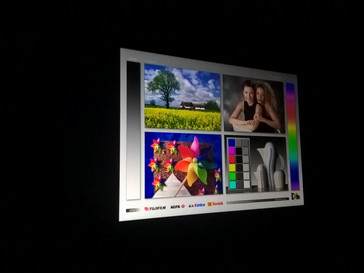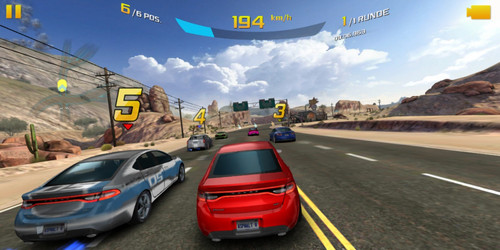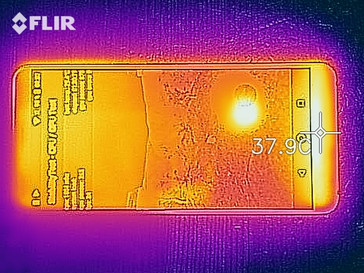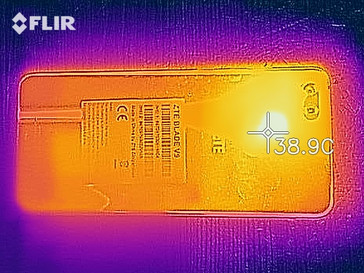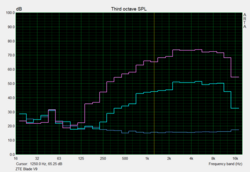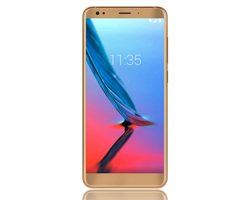ZTE Blade V9 Smartphone Review

ZTE has successfully established its Blade series smartphones as low-priced mid-range devices. Whether it is the Blade V6, Blade V7 or V8, the Chinese manufacturer has always managed to meet the expectation of a low price and comparatively good hardware. Unfortunately, multiple generations of ZTE devices were plagued by issues like bad speakers, bad Wi-Fi and poor camera performance in low-light situations. The ZTE Blade V9 is supposed to improve on all of this. On that account, our current ZTE smartphone is even being advertised for its camera, which is supposed to produce comparatively good pictures in poor lighting conditions.
The new Qualcomm Snapdragon 450 promises good system performance and the Adreno 506 graphics unit powers multimedia content. In order to make the comparison with other smartphones of this class as meaningful as possible we compare the Blade V9 to phones with a similar price/performance ratio. Therefore, we included the 2017 Samsung Galaxy J7, Lenovo's P2 smartphone and the Huawei P Smart. We will also look at the predecessor ZTE Blade V8 in this comparison.
Case - Let he who is without glass throw the first smartphone
The Blade V9 is available in black and in gold. Both models have rounded off edges and a glass back. The latter makes the ZTE smartphone more slippery. Firmly gripping the edges is imperative to hold the device safely. Additionally, the glass surface is very prone to fingerprints. Our test device is gold-colored and looks very high-quality. The buttons on the left side are held securely and have a nice pressure point. ZTE did not design the battery to be manually replaceable by the customer. If you want to use the dual SIM feature of the phone, you will lose the option of expanding the storage through a MicroSD card. The designated slot only has room for either a second SIM or a MicroSD card.
Features - ZTE offers high-end light
ZTE fits the Blade V9 with Qualcomm's Snapdragon 450 SoC. It facilitates longer battery life through better energy-efficiency and brings some features to lower-priced smartphones that are otherwise restricted to more expensive devices. Thus, now mid-range devices profit from advanced camera algorithms and can access biometric sensors like, for example, Iris scanners if installed. The integrated graphics unit Adreno 506 is responsible for displaying the screen's content. The Blade V9's MicroUSB port only uses the USB 2.0 standard to transfer data and is also used for charging. The internal storage of the device is limited to 32 GB, but it is expandable with an up to 256 GB MicroSD card. In that case, users lose the dual SIM feature though, since there is only one slot for both cards. Plus, it is not possible to transfer app data to the SD card or to format it as internal storage.
Software - Blade V9 with up-to-date Android Oreo
Android Oreo version 8.1.0 is already preinstalled ex-factory on the Blade V9. The user interface of it remains untouched allowing Android users to feel right at home. The ZTE Cares app is also preconfigured on the ZTE mobile phone. It enables customer support and device diagnostics, e.g. to carry out a warranty case. Multiple users for the ZTE smartphone can be set up in the settings menu.
Communication and GPS - Blade V9 only locates via Internet
The Blade V9 allows you to make calls around the globe using different GSM, UMTS and LTE mobile communications networks. Even the LTE band 20 is supported, which is not always a given with smartphones from China. The dual SIM feature of the Android smartphone allows users to be connected to multiple networks at once. There is also the possibility to make calls through Voice HD LTE or Voice over LTE, if it is supported by your carrier.
Our Iperf test measuring Wi-Fi speed kept getting interrupted. Therefore we were not able to determine the Wi-Fi data throughput. The Blade V9's Wi-Fi does well in day-to-day use, though. Browsing and downloading from the app store didn't seem too slow to us, but they were not especially fast, either.
| Networking | |
| iperf3 transmit AX12 | |
| Samsung Galaxy J7 2017 | |
| Lenovo P2 | |
| ZTE Blade V8 | |
| Huawei P smart | |
| ZTE Blade V9 | |
| iperf3 receive AX12 | |
| Samsung Galaxy J7 2017 | |
| Lenovo P2 | |
| ZTE Blade V8 | |
| Huawei P smart | |
| ZTE Blade V9 | |
In the practical test, the GPS of the Blade V9 stays close to our device for comparison, the Garmin Edge 500. The reported length of the test track is identical and the recorded average speed is similarly accurate. The detailed view shows that the ZTE's curve progression recording is slightly imprecise. The exact position is often four to five meters next to the actual position, which is reasonably accurate, but could still be the difference between two sides of a street.
Telephony and Call Quality
ZTE relies on the standard Android phone app that comes with its standard features. Participants can be heard very authentically and with great sound reproduction through the internal speaker. On the other end of the line, the microphone makes sure you're understood well, too.
The speakers of the Blade V9 or the included stereo headset can be used for hands-free communication. The speakers lack depth and participants sound slightly tinny. The headset sounds much better. It is also well-suited for music, since it is able to play back sounds and music on a very broad sound spectrum.
Cameras - ZTEs Super-Night mode is only suitable for still life
ZTE advertises the Blade V9 as a smartphone with a camera that can take good pictures even in poor lighting conditions. The camera aperture size of f/1.8 already allows us to infer that, at least on paper, a very light-sensitive sensor is available. The main camera allows for pictures with a maximum resolution of 16 MP and is supported by a 5 MP sensor for depth information.
Hobby photographers are met with a wide variety of features such as touch auto focus, automatic white balance, variable brightness and adjustable exposure time. The Super-Night photo mode is designed for night shots. It automatically optimizes light sensitivity for poorly lit environments. With it, our low-light test picture came out much better than on comparable smartphones, although a steady hand is still required. If there is too much movement while taking pictures, the photos become blurry despite Super-Night mode being active.
Photos in daylight are sharp and detailed. A closer look shows subtleties that quickly fade into blurriness outside of the focus area. This effect is reminiscent of the bokeh mode, which uses blurriness around the center to achieve an artistic effect. The actual bokeh mode can be selected in the settings. The Blade V9's camera is also able to capture color gradients and differences in texture in close-up shots with a strong difference in light intensity. The worse the lighting conditions, the worse the image noise in a close-up view becomes. The 13 MP front camera is available for selfie fans. With its fixed-focus lens, it takes pictures that appear somewhat faint and don't have clearly defined contours or color gradients.
The camera of the Blade V9 generally captures colors as too dark. Red and green shades are depicted the most accurately. This is does not stand out in the final picture since the color accuracy is shifted evenly.
The ZTE smartphone represents our test chart clearly and with a lot of detail. We noticed a little bit of blurriness towards the edges that is more prominent to the left and to the right than at the top and on the bottom. Intricacies get lost mainly if the lighting conditions are insufficient.
Accessories and Warranty - The ZTE V9 comes with a lot of accessories
The scope of delivery of the Blade V9 includes a USB charging adapter with a USB Type-A to MicroUSB cable, a wired stereo headset and a compatible silicone shell. There are no further accessories available from ZTE for the Blade V9. All of ZTE's mobile phones come with 24 months warranty.
Please see our Guarantees, Return Policies and Warranties FAQ for country-specific information.
Input Devices & Handling - Fingerprint looking for sensor
The virtual keyboard of the Blade V9 can be used to type longer messages. The vibration feedback feels good and conveys a good typing experience, whereby the small buttons are reliable. The keyboard is not too small in portrait mode and in landscape mode all the keys are easy to reach even with smaller hands.
The fingerprint scanner is on the back of the ZTE V9. It often took two or three tries to hit it in a way where it recognizes the fingerprint. This unnecessarily delays the unlocking of the V9, which is why we resorted to the PIN code more than once instead of trying to find the right place to touch.
Display - The ZTE shines with saturated colors
ZTE equips the Blade V9 with a 5.7-inch display with an 18:9 or 2:1 ratio. It displays screen content with a resolution of 2160x1080 pixels. The IPS panel performs slightly worse than the display of its predecessor Blade V8. The ZTE mainly lacks in average brightness and has a bad contrast ratio, making it subpar compared to its competition.
If the brightness is reduced below 14%, the display flickers with a frequency of 3472 Hz which suggests the use of PWM for brightness adjustment. This frequency is relatively high, meaning even sensitive eyes shouldn't feel strained when looking at the display for a long time.
| |||||||||||||||||||||||||
Brightness Distribution: 90 %
Center on Battery: 459 cd/m²
Contrast: 740:1 (Black: 0.62 cd/m²)
ΔE ColorChecker Calman: 4.5 | ∀{0.5-29.43 Ø4.78}
ΔE Greyscale Calman: 4.9 | ∀{0.09-98 Ø5}
Gamma: 2.17
CCT: 7261 K
| ZTE Blade V9 IPS, 2160x1080, 5.7" | ZTE Blade V8 IPS, 1920x1080, 5.2" | Samsung Galaxy J7 2017 Super AMOLED, 1920x1080, 5.5" | Huawei P smart IPS, 2160x1080, 5.7" | Lenovo P2 AMOLED, 1920x1080, 5.5" | |
|---|---|---|---|---|---|
| Screen | 6% | 25% | 13% | 21% | |
| Brightness middle (cd/m²) | 459 | 482 5% | 454 -1% | 573 25% | 479 4% |
| Brightness (cd/m²) | 437 | 448 3% | 463 6% | 568 30% | 477 9% |
| Brightness Distribution (%) | 90 | 79 -12% | 86 -4% | 89 -1% | 91 1% |
| Black Level * (cd/m²) | 0.62 | 0.64 -3% | 0.63 -2% | ||
| Contrast (:1) | 740 | 753 2% | 910 23% | ||
| Colorchecker dE 2000 * | 4.5 | 4 11% | 2 56% | 4.2 7% | 2.4 47% |
| Colorchecker dE 2000 max. * | 7.3 | 6.5 11% | 5.3 27% | 6.4 12% | 5.6 23% |
| Greyscale dE 2000 * | 4.9 | 3.4 31% | 1.7 65% | 4.6 6% | 2.8 43% |
| Gamma | 2.17 101% | 2.13 103% | 2.1 105% | 2.24 98% | 2.28 96% |
| CCT | 7261 90% | 6774 96% | 6394 102% | 7157 91% | 6702 97% |
* ... smaller is better
Screen Flickering / PWM (Pulse-Width Modulation)
| Screen flickering / PWM detected | 3472 Hz | ≤ 14 % brightness setting | |
The display backlight flickers at 3472 Hz (worst case, e.g., utilizing PWM) Flickering detected at a brightness setting of 14 % and below. There should be no flickering or PWM above this brightness setting. The frequency of 3472 Hz is quite high, so most users sensitive to PWM should not notice any flickering. In comparison: 53 % of all tested devices do not use PWM to dim the display. If PWM was detected, an average of 8108 (minimum: 5 - maximum: 343500) Hz was measured. | |||
The display of the V9 shines with saturated colors and with deeply dark screen areas, despite the heightened black value. High-resolution photos are depicted sharply, and it's easy to distinguish color gradients and differentiated areas. Quickly-changing sequences of pictures or video-recordings are depicted clearly and fluidly. We were not able to observe disruptive ghosting or distorted colors in our test.
Display Response Times
| ↔ Response Time Black to White | ||
|---|---|---|
| 28 ms ... rise ↗ and fall ↘ combined | ↗ 11 ms rise | |
| ↘ 17 ms fall | ||
| The screen shows relatively slow response rates in our tests and may be too slow for gamers. In comparison, all tested devices range from 0.1 (minimum) to 240 (maximum) ms. » 70 % of all devices are better. This means that the measured response time is worse than the average of all tested devices (20.2 ms). | ||
| ↔ Response Time 50% Grey to 80% Grey | ||
| 54 ms ... rise ↗ and fall ↘ combined | ↗ 25 ms rise | |
| ↘ 29 ms fall | ||
| The screen shows slow response rates in our tests and will be unsatisfactory for gamers. In comparison, all tested devices range from 0.165 (minimum) to 636 (maximum) ms. » 90 % of all devices are better. This means that the measured response time is worse than the average of all tested devices (31.6 ms). | ||
The Blade V9's screen content is clearly visible outdoors. There are no disruptive reflections on the display when the sky is cloudy. As soon as it gets brighter, though, the brightness becomes insufficient to outshine the sunlight. The screen has very stable viewing angles while there are no reflections on the display. We can even discern the smartphone's screen content from extreme angles.
Performance - Blade V9 brings high-end to the low-price segment
The Blade V9 is equipped with Qualcomm's new Snapdragon 450. It is a mid-range SoC, which, among other things, has better energy efficiency and makes formerly exclusive features for high-end phones available for cheaper smartphones. Next to improved battery life, it enables advanced video and image-editing as well as biometric features. The Adreno 506 graphics unit is responsible for multimedia content, supporting all modern APIs like Vulkan, OpenGL ES 3.1 + AE (3.2), OpenCL 2.0 and Direct3D 12.
The Snapdragon 450 performs almost as well as the Snapdragon 625 in our benchmark tests and is thus able to claim one of the higher places in our comparison. The Adreno 506 GPU performs even better still.
| AnTuTu v6 - Total Score (sort by value) | |
| ZTE Blade V9 | |
| ZTE Blade V8 | |
| Samsung Galaxy J7 2017 | |
| Huawei P smart | |
| Lenovo P2 | |
| Average Qualcomm Snapdragon 450 (54731 - 60077, n=10) | |
| PCMark for Android | |
| Work performance score (sort by value) | |
| ZTE Blade V9 | |
| ZTE Blade V8 | |
| Samsung Galaxy J7 2017 | |
| Huawei P smart | |
| Lenovo P2 | |
| Average Qualcomm Snapdragon 450 (4836 - 6062, n=14) | |
| Work 2.0 performance score (sort by value) | |
| ZTE Blade V9 | |
| ZTE Blade V8 | |
| Samsung Galaxy J7 2017 | |
| Huawei P smart | |
| Lenovo P2 | |
| Average Qualcomm Snapdragon 450 (4171 - 4759, n=14) | |
| GFXBench 3.0 | |
| on screen Manhattan Onscreen OGL (sort by value) | |
| ZTE Blade V9 | |
| ZTE Blade V8 | |
| Samsung Galaxy J7 2017 | |
| Huawei P smart | |
| Lenovo P2 | |
| Average Qualcomm Snapdragon 450 (8.7 - 18, n=13) | |
| Average of class Smartphone (18 - 166, n=159, last 2 years) | |
| 1920x1080 1080p Manhattan Offscreen (sort by value) | |
| ZTE Blade V9 | |
| ZTE Blade V8 | |
| Samsung Galaxy J7 2017 | |
| Huawei P smart | |
| Lenovo P2 | |
| Average Qualcomm Snapdragon 450 (9.2 - 9.4, n=13) | |
| Average of class Smartphone (12 - 606, n=158, last 2 years) | |
| GFXBench 3.1 | |
| on screen Manhattan ES 3.1 Onscreen (sort by value) | |
| ZTE Blade V9 | |
| ZTE Blade V8 | |
| Samsung Galaxy J7 2017 | |
| Huawei P smart | |
| Lenovo P2 | |
| Average Qualcomm Snapdragon 450 (5.7 - 13, n=13) | |
| Average of class Smartphone (11 - 166, n=159, last 2 years) | |
| 1920x1080 Manhattan ES 3.1 Offscreen (sort by value) | |
| ZTE Blade V9 | |
| ZTE Blade V8 | |
| Samsung Galaxy J7 2017 | |
| Huawei P smart | |
| Lenovo P2 | |
| Average Qualcomm Snapdragon 450 (6 - 6.9, n=13) | |
| Average of class Smartphone (8.4 - 413, n=158, last 2 years) | |
| Lightmark - 1920x1080 1080p (sort by value) | |
| ZTE Blade V9 | |
| Average Qualcomm Snapdragon 450 (5.38 - 5.41, n=2) | |
| Basemark X 1.1 | |
| Medium Quality (sort by value) | |
| ZTE Blade V8 | |
| High Quality (sort by value) | |
| ZTE Blade V8 | |
| Basemark ES 3.1 / Metal - offscreen Overall Score (sort by value) | |
| ZTE Blade V9 | |
| ZTE Blade V8 | |
| Average Qualcomm Snapdragon 450 (129 - 129, n=2) | |
| Average of class Smartphone (205 - 7731, n=36, last 2 years) | |
Version 1.2.18 of the Ume browser is preinstalled on the Blade V9. Our test device only managed to reach mediocre results in the browser benchmarks with it. The results don't get better with the also preinstalled Chrome 65 either. In day-to-day use websites load quickly and we were not able to notice any limitations.
| JetStream 1.1 - Total Score | |
| Lenovo P2 (Chrome 56) | |
| Huawei P smart (Chrome 64) | |
| Samsung Galaxy J7 2017 (Samsung Browser 5.4) | |
| Average Qualcomm Snapdragon 450 (22 - 22.7, n=13) | |
| ZTE Blade V9 (Ume Browser 1.2.18) | |
| ZTE Blade V8 (Chrome 57.0.2987.132) | |
| Octane V2 - Total Score | |
| Average of class Smartphone (2228 - 121337, n=201, last 2 years) | |
| Samsung Galaxy J7 2017 (Samsung Browser 5.4) | |
| Huawei P smart (Chrome 64) | |
| Lenovo P2 (Chrome 56) | |
| Average Qualcomm Snapdragon 450 (3470 - 4115, n=14) | |
| ZTE Blade V9 (Ume Browser 1.2.18) | |
| ZTE Blade V8 (Chrome 57.0.2987.132) | |
| Mozilla Kraken 1.1 - Total | |
| ZTE Blade V8 (Chrome 57.0.2987.132) | |
| ZTE Blade V9 (Ume Browser 1.2.18) | |
| Average Qualcomm Snapdragon 450 (11012 - 11863, n=14) | |
| Huawei P smart (Chrome 64) | |
| Lenovo P2 (Chrome 56) | |
| Samsung Galaxy J7 2017 (Samsung Browser 5.4) | |
| Average of class Smartphone (257 - 28190, n=156, last 2 years) | |
| WebXPRT 2015 - Overall | |
| Average Qualcomm Snapdragon 450 (90 - 103, n=7) | |
| Huawei P smart (Chrome 64) | |
| ZTE Blade V9 (Ume Browser 1.2.18) | |
| Lenovo P2 | |
| Samsung Galaxy J7 2017 (Samsung Browser 5.4) | |
| ZTE Blade V8 (Chrome 57.0.2987.132) | |
* ... smaller is better
The SD card reader of the Blade V9 achieved comparatively good results with our reference memory card, the Toshiba Exceria Pro M501, being slightly above average for this device class. Unfortunately, the internal eMMC flash storage does not manage to replicate these results and turns out to be the slowest compared to its competitors. These results barely have an impact on day-to-day use. Files open and apps start quickly.
| ZTE Blade V9 | ZTE Blade V8 | Samsung Galaxy J7 2017 | Huawei P smart | Lenovo P2 | Average 32 GB eMMC Flash | Average of class Smartphone | |
|---|---|---|---|---|---|---|---|
| AndroBench 3-5 | 10% | -19% | 35% | 40% | 12% | 1416% | |
| Sequential Read 256KB (MB/s) | 265.4 | 278.1 5% | 198.5 -25% | 269.4 2% | 270.1 2% | 242 ? -9% | 2226 ? 739% |
| Sequential Write 256KB (MB/s) | 119.4 | 77.7 -35% | 53 -56% | 121.1 1% | 76.7 -36% | 100.5 ? -16% | 1848 ? 1448% |
| Random Read 4KB (MB/s) | 29.81 | 39.89 34% | 25.86 -13% | 66.1 122% | 38.2 28% | 43.1 ? 45% | 295 ? 890% |
| Random Write 4KB (MB/s) | 12.47 | 12.69 2% | 10.54 -15% | 21.3 71% | 44.4 256% | 22.3 ? 79% | 335 ? 2586% |
| Sequential Read 256KB SDCard (MB/s) | 83.9 ? | 96.5 ? 15% | 76.1 ? -9% | 82.3 ? -2% | 79.3 ? -5% | 71.8 ? -14% | |
| Sequential Write 256KB SDCard (MB/s) | 62.1 ? | 87.1 ? 40% | 63.9 ? 3% | 72.4 ? 17% | 59.4 ? -4% | 52.9 ? -15% |
Games - Entertainment to go with the V9
The graphics performance of the Adreno 506 graphics unit matches that of a Snapdragon 625, enabling the Blade V9's Snapdragon 450 to achieve similar 3D performance. It runs more demanding games like Asphalt 8: Airborne well, even at maxed-out settings. Loading times are moderate. The ZTE V9 performs significantly better, especially when compared to the predecessor Blade V8.
| Asphalt 8: Airborne | |||
| Settings | Value | ||
| high | 28 fps | ||
| very low | 30 fps | ||
| Dead Trigger 2 | |||
| Settings | Value | ||
| high | 30 fps | ||
| Temple Run 2 | |||
| Settings | Value | ||
| default | 60 fps | ||
Emissions - ZTE keeps cool
Temperature
The Blade V9 always kept cool in our test. The surface temperature does not exceed 40 °C even under load. Our test device does produce some heat, though, "heating" up to a constant 25 °C at a 21 °C ambient temperature.
(+) The maximum temperature on the upper side is 32 °C / 90 F, compared to the average of 35.2 °C / 95 F, ranging from 21.9 to 247 °C for the class Smartphone.
(+) The bottom heats up to a maximum of 31.8 °C / 89 F, compared to the average of 34 °C / 93 F
(+) In idle usage, the average temperature for the upper side is 26.6 °C / 80 F, compared to the device average of 32.9 °C / 91 F.
Speakers
The speakers of our ZTE smartphone are a less-than-ideal solution. The sound characteristics are limited to mid tones; high and low tones fall off drastically. Thus, music and speech sound very unbalanced. The quality of the Blade V9's speakers is on par with the class average in its price segment. The device is equipped with a 3.5 mm jack for headsets or headphones. It has a very soft feedback when plugging in a cable and doesn't click into place. The connection is still firm and does not come loose accidentally.
ZTE Blade V9 audio analysis
(+) | speakers can play relatively loud (82.9 dB)
Bass 100 - 315 Hz
(-) | nearly no bass - on average 30.2% lower than median
(±) | linearity of bass is average (11% delta to prev. frequency)
Mids 400 - 2000 Hz
(+) | balanced mids - only 4.6% away from median
(+) | mids are linear (4.9% delta to prev. frequency)
Highs 2 - 16 kHz
(±) | higher highs - on average 7.7% higher than median
(+) | highs are linear (2.4% delta to prev. frequency)
Overall 100 - 16.000 Hz
(±) | linearity of overall sound is average (25.7% difference to median)
Compared to same class
» 63% of all tested devices in this class were better, 7% similar, 30% worse
» The best had a delta of 11%, average was 35%, worst was 134%
Compared to all devices tested
» 78% of all tested devices were better, 5% similar, 17% worse
» The best had a delta of 4%, average was 24%, worst was 134%
Apple iPhone X audio analysis
(+) | speakers can play relatively loud (85.3 dB)
Bass 100 - 315 Hz
(±) | reduced bass - on average 14.9% lower than median
(±) | linearity of bass is average (9.4% delta to prev. frequency)
Mids 400 - 2000 Hz
(+) | balanced mids - only 3.4% away from median
(+) | mids are linear (5.1% delta to prev. frequency)
Highs 2 - 16 kHz
(±) | higher highs - on average 7.3% higher than median
(+) | highs are linear (4.6% delta to prev. frequency)
Overall 100 - 16.000 Hz
(±) | linearity of overall sound is average (19% difference to median)
Compared to same class
» 24% of all tested devices in this class were better, 9% similar, 67% worse
» The best had a delta of 11%, average was 35%, worst was 134%
Compared to all devices tested
» 44% of all tested devices were better, 8% similar, 48% worse
» The best had a delta of 4%, average was 24%, worst was 134%
Energy Management - Cordless through the night with ZTE
Power consumption
We measured a relatively high power consumption from our test device during idle. Most of its peers are slightly more economical, which does not apply to measurements under load though. Here, the previously conceived picture reverses and our Blade V9 outperforms the competition. Although all in all, the ZTE smartphone's power consumption is still above average.
The delivery includes a 10-watt charging adapter that is able to charge the phone's battery under load. A full charge takes close to two hours.
| Off / Standby | |
| Idle | |
| Load |
|
Key:
min: | |
| ZTE Blade V9 3200 mAh | ZTE Blade V8 2730 mAh | Samsung Galaxy J7 2017 3600 mAh | Huawei P smart 3000 mAh | Lenovo P2 5100 mAh | Average Qualcomm Snapdragon 450 | Average of class Smartphone | |
|---|---|---|---|---|---|---|---|
| Power Consumption | -15% | 37% | -21% | 30% | -30% | -62% | |
| Idle Minimum * (Watt) | 0.71 | 0.98 -38% | 0.39 45% | 0.62 13% | 0.54 24% | 0.794 ? -12% | 0.848 ? -19% |
| Idle Average * (Watt) | 1.73 | 1.76 -2% | 1.06 39% | 1.76 -2% | 1.01 42% | 2.27 ? -31% | 1.434 ? 17% |
| Idle Maximum * (Watt) | 1.78 | 1.79 -1% | 1.08 39% | 1.87 -5% | 1.03 42% | 2.48 ? -39% | 1.618 ? 9% |
| Load Average * (Watt) | 2.74 | 2.89 -5% | 1.82 34% | 4.47 -63% | 1.78 35% | 3.95 ? -44% | 7.01 ? -156% |
| Load Maximum * (Watt) | 4.36 | 5.62 -29% | 3.21 26% | 6.39 -47% | 3.98 9% | 5.38 ? -23% | 11.3 ? -159% |
* ... smaller is better
Battery Runtime
In our practical Wi-Fi test, the ZTE Blade V9 can be used for more than 13 hours of browsing at an adjusted brightness. Thus, the V9 surpasses its predecessor Blade V8 by one-and-a-half hours. Compared to the device class average, the battery life is good but not great. This is very reasonable for a cell phone that currently costs about 270 Euros (~$332).
| ZTE Blade V9 3200 mAh | ZTE Blade V8 2730 mAh | Samsung Galaxy J7 2017 3600 mAh | Huawei P smart 3000 mAh | Lenovo P2 5100 mAh | |
|---|---|---|---|---|---|
| Battery runtime | -11% | 14% | -29% | 23% | |
| WiFi v1.3 (h) | 13.2 | 11.7 -11% | 15.1 14% | 9.4 -29% | 16.3 23% |
| Reader / Idle (h) | 16.1 | 32.5 | 16.4 | 47.4 | |
| H.264 (h) | 9.1 | 18.3 | 10.3 | 20 | |
| Load (h) | 5 | 8.8 | 3.4 | 8.8 |
Pros
Cons
Verdict - Affordable phone by ZTE
Users looking for a phone without contract or those who simply want a low-priced smartphone with a premium design would be well advised to take a look at the Blade V9 by ZTE. The V9 has ample performance for most applications and runs games well, too. The display has vibrant colors and its high resolution creates a sharp picture. Speaking of which, the main camera takes sharp pictures as well, although one should not expect too much from the Super-Night mode. While it does improve photos in poor lighting conditions, movement or an unsteady hand heavily impact the result.
Buyers of the Blade V9 receive a smartphone with a great design and solid system performance for a low price. The included accessories round out the package well.
At 270 Euros (~$332), ZTE offers a good alternative to the many other manufacturers of cheap smartphones. Since ultimately, the performance values of the competition don't differ much from those of the Blade V9, the design and camera are, according to our impression, the deciding factors for a purchase. The included accessories are a big plus in our book. The silicone shell is a crucial accessory that is immediately available. The included stereo headset delivers excellent sound and is ideal for listening to music.
ZTE Blade V9
- 04/03/2018 v6 (old)
Mike Wobker




